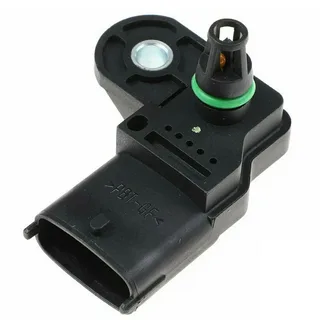When squeezing every ounce of performance from your vehicle, the unsung hero often goes unnoticed—your car’s MAP (Manifold Absolute Pressure) sensor. It may be small, but this device is crucial in optimizing engine efficiency and enhancing the driving experience. Whether you’re a seasoned gearhead or just someone who appreciates smooth rides, understanding the benefits of using a high-quality Ford Ranger MAP sensor can unlock new levels of power and responsiveness in your beloved ride.
What is a Ford Map Sensor?
A Ford Map Sensor, or Manifold Absolute Pressure sensor, plays a crucial role in modern vehicles. It measures the pressure within the intake manifold, providing essential data to your engine’s computer. This small yet powerful device detects changes in air pressure as you accelerate or decelerate. Sending accurate readings to the Engine Control Unit (ECU) helps optimize fuel delivery and ignition timing.
The importance of a functioning map sensor cannot be overstated. When it operates correctly, it ensures your engine runs smoothly and efficiently. A faulty map sensor can lead to poor performance and increased emissions. This component is vital for achieving optimal combustion in the broader fuel management system. Understanding its function will help any vehicle owner appreciate its importance to performance and reliability.
Map Sensor BT50 and its Role in Vehicle Performance
The Map Sensor BT50 is a crucial component in your vehicle that plays a significant role in its overall performance. It is responsible for collecting and relaying essential data to the engine control unit (ECU), which then uses this information to make necessary adjustments for optimal engine performance. One of the main functions of the Map Sensor is to measure the amount of air entering the engine. The ECU uses this data to calculate the correct air-fuel ratio, essential for efficient combustion and power generation.
The sensor continuously monitors changes in airflow, ensuring that the engine receives an adequate amount of air at all times. Another vital role of the Map Sensor is to determine the altitude or elevation of your vehicle. As you drive through different terrains, such as mountains or valleys, variations in atmospheric pressure can affect your vehicle’s performance. The map sensor measures these changes and provides accurate readings to the ECU, allowing it to adjust fuel delivery accordingly. This information allows for precise timing adjustments, resulting in smoother acceleration and improved fuel efficiency.
Better Fuel Efficiency
A Ford Map Sensor plays a crucial role in optimizing fuel efficiency. It measures the manifold absolute pressure and sends this data to your vehicle’s engine control unit (ECU). With precise readings, the ECU can make real-time adjustments to the air-fuel mixture. This ensures that your engine operates under optimal conditions, avoiding excessive fuel consumption.
When the sensor provides accurate information, it helps prevent issues like running too rich or too lean. A well-calibrated air-fuel ratio means better combustion and less wasted fuel. As a result of improved efficiency, you might notice fewer trips to the gas station. Plus, over time, those savings add up significantly. Keeping your Ford equipped with a reliable MAP sensor is an investment in performance and economy on every journey.
PK Ranger Map Sensor Improved Engine Performance
The PK Ranger map sensor is crucial for improving your vehicle’s performance. This small but mighty sensor monitors and controls the engine’s air-fuel mixture, allowing for optimal combustion and efficient fuel consumption. One of the significant benefits of using a Ford Map Sensor in your PK Ranger is improved engine performance.
This sensor accurately measures the amount of air entering the engine and ensures that the correct amount of fuel is injected for each cycle. This results in a more efficient and powerful combustion, increasing horsepower and torque. In addition to improved performance, using a map sensor can lead to better fuel economy and enhanced performance. With precise control over the air-fuel ratio, your vehicle will use only the necessary amount of fuel, reducing wastage and ultimately saving you money at the pump.
Not only does using a Ford Map Sensor improve your vehicle’s performance, but it also helps prolong its lifespan. This sensor reduces wear and tear on other engine parts by ensuring that all components work together harmoniously. This leads to less strain on critical components such as spark plugs and valves, potentially saving you from costly repairs.
Ranger Map Sensor Enhanced Vehicle Safety
The Ranger map sensor plays a crucial role in enhancing vehicle safety. It continuously monitors the intake manifold’s pressure, providing real-time data to the engine control unit (ECU). This allows for immediate adjustments to fuel delivery and ignition timing. When the sensor detects irregularities, such as sudden changes in pressure or airflow, it triggers alerts. These warnings can indicate potential engine malfunctions before they escalate into serious issues.
By maintaining optimal performance levels, the map sensor helps prevent stalling or loss of power while driving. Drivers can respond quickly to these alerts, allowing them to make informed decisions on whether it’s safe to continue driving. Incorporating a reliable Ford Map Sensor into your vehicle adds an extra layer of protection against unexpected problems on the road. It’s not just about performance; it’s also about ensuring safer journeys for everyone behind the wheel.
Cost Savings
Investing in a high-quality Ford Map Sensor can lead to significant cost savings. A well-functioning sensor allows your engine to operate more efficiently, reducing wear and tear on components. This means fewer repairs and less frequent replacements of vital parts like spark plugs or fuel injectors.
Additionally, with improved fuel efficiency comes lower gas expenses. You’ll visit the pump less often as your vehicle optimizes its fuel consumption based on accurate readings from the Map Sensor. These savings add up quickly, making it a wise financial decision for any owner looking to enhance their vehicle’s longevity and performance.
By prioritizing the installation of a reliable Ford Map Sensor, you not only boost your driving experience but also create value for your investment in the long run. Embracing this technology is undoubtedly one of the best choices for maximizing performance and cost-effectiveness in your vehicle maintenance strategy.
Solutions for Ford Ranger Map Sensor Issues
The map sensor in your Ford Ranger plays a crucial role in your vehicle’s performance. It measures the air entering the engine and sends this information to the engine control unit (ECU). The ECU then adjusts the fuel-air mixture accordingly for optimal performance and efficiency. However, when the map sensor malfunctions or becomes faulty, it can cause various problems, such as stalling, rough idling, poor acceleration, and decreased fuel efficiency. The Ford Ranger map sensor issues not only affect the overall performance of your vehicle but also lead to costly repairs if left unresolved.
Luckily, solutions are available to address map sensor issues in your Ford Ranger. Let’s take a look at some of them:
Cleaning/Replacing Dirty Map Sensor
Over time, dirt and debris can build up on your map sensor, causing it to malfunction. In this case, cleaning or replacing the dirty map sensor can solve the issue. Cleaning involves using specialized cleaner sprays, while replacement requires purchasing a new one from an authorized dealer or auto parts store.
Checking/Cleaning Vacuum Lines
Vacuum lines are essential in maintaining proper pressure so your map sensor functions correctly. If these lines become clogged or damaged, they can affect the performance of your map sensor and lead to issues with your vehicle’s overall performance. Therefore, regularly checking and cleaning vacuum lines is crucial for ensuring the optimal functioning of your Ford Ranger’s map sensor.
Calibrating/Resetting Map Sensor
In some cases, where no visible damages or blockages are present on the map sensor itself or its related components, calibration or resetting may be necessary instead of replacement. Calibrating ensures that the signal sent to the ECU is accurate and helps restore proper engine performance.
Conclusion
In conclusion, the Ford Ranger map sensor is valuable to any vehicle and offers numerous benefits. Its accuracy and efficiency in monitoring air intake levels make it an essential tool for optimal engine performance. Not only does it improve fuel economy, but it also helps reduce harmful emissions and prolongs the lifespan of your vehicle’s engine. Whether you’re a seasoned mechanic or just starting to learn about car maintenance, a Ford map sensor is a wise choice for keeping your vehicle running smoothly and efficiently.
FAQS
What Is A Map Sensor, And What Does It Do In A Ford Ranger?
A map and manifold absolute pressure sensor are essential to modern engine management systems. In a Ford Ranger, the map sensor measures the air entering the engine and relays this information to the engine control unit (ECU). The ECU then uses this data to adjust fuel injection and ignition timing for optimal performance.
How Does Using A Map Sensor Benefit My Ford Ranger?
Using a map sensor in your Ford Ranger can have several benefits, such as improving fuel efficiency, increasing horsepower and torque, and reducing emissions. By accurately measuring the air intake, the ECU can make precise adjustments to optimize the engine’s performance, leading to better fuel economy and more power from your vehicle.
Can I Install A Ford Ranger Map Sensor, Or Need Professional Help?
Installing a map sensor may require some technical knowledge and tools. You should have it installed by a professional mechanic familiar with the vehicle’s make and model. They will ensure that the installation is done correctly for optimal performance.


